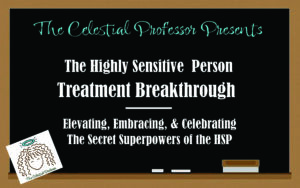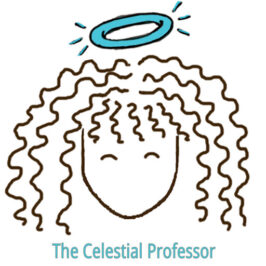I used to dream that I was attempting to run but my legs felt like lead weights, so no matter how much I tried I could never make any real progress. I could never really get anywhere. I’d wake up sweating and frustrated and crying.
Who or what was I trying to get away from? Where was I trying to run to or away from? I never knew the answer, only that I felt desperate, and desperately inadequate to the task.
How do you stop feeling so terrible when you are in so much pain?
HSPs (Highly Sensitive People) carry around a heck of a lot of pain. Like dragging along a load of cement blocks wherever we go…only worse. Because dragging around cement blocks only affects our physical bodies, where our type of pain encompasses the whole enchilada: mind, body, and spirit.
For many of us, sadly, this pain becomes so great that we tell ourselves it might be better to opt out of life altogether.
In this article, we’ll explore:
- the need to share pain
- the freedom that comes when you realize that sharing the pain isn’t enough, and
- the freedom that comes from its release
(1) The need to share your pain
The other day I received an email publicizing a course given by one of the gurus of the High Sensitivity “movement.” What fascinated me was the email’s invitation for people to share their story of pain. Why would anyone want to join a group where everyone is sharing painful past histories and experiences? I asked myself.
What I realized, however, almost simultaneously with that thought, was that we all, at some point on our journeys, need to share how we feel or have felt with others in order to feel connected and understood. In the case of grief, for example, knowing that other people have suffered through the loss of a loved one helps us know we are not alone in our bereavement; that, while the world swirls on around us, we have a place where we can feel unburdened by the need to keep up appearances. Ultimately, this kind of supports helps us move through the pain into a lighter vibration and, hopefully, into a renewed tether to life.
These days a common way to express how we share the past, all the things that have “happened to us,” is by saying, “This is my story.” It’s what we tell ourselves over and over about what happened, how it happened, why it felt so bad, and how it has negatively impacted and affected our existence. All of which is valuable, often critical, in terms of our path to a higher consciousness.
(2) When the need to share your pain doesn’t help
The thing is, as I think we all know, that at some point all the storytelling in the world stops feeling like a purge and starts feeling like pouring more cement on the wound. At some point, if you tune into how your body feels when you speak your story, there’s more of a sense of drudgery in the telling, a sense that you’ve been here before and it’s comfortable, but the comfort in the rehashing is becoming…uncomfortable.
It’s at this point—a point that is different for each one of us—we tire of our pain and the stories we’re telling about it. The sharing that might once have been revelatory, or at the least a relief, becomes almost as painful as the pain itself. We feel like a victim of our pain and the retelling that only exacerbates its memory or the present quality of it. What does this mean?
It’s your signal! It’s your sign! It’s when you know it’s time to acknowledge how tiring it is to hold onto that story of pain and powerlessness. Of victimization. Of the feeling that you need to protect yourself from…yourself…and from the fear that arises when you think about letting go of the comfort that your storytelling has provided you.
(3) The freedom that comes from release
There’s a lot of talk about empowerment these days, have you noticed? Yet, again, it’s one thing to say we want to be empowered, and quite another to grab a hold of it. Empowerment comes from a sense of knowing that you can handle what comes your way, which also means it comes with responsibility for whatever you choose to bring into your world. It’s the conundrum of free will and choice. We all want it and yet none of us want to feel we’re the problem when the outcome is less agreeable than what we hoped for. To put it frankly, putting the blame on someone else is a heck of a lot easier, if only for a while.
Ultimately, what we’re searching for is feeling empowered AND feeling good about it. Feeling that sense of letting go that so many of us talk about. If I had to put a percentage on it, I’d say that 90% of my clients come to me saying that they’re tired of feeling the way they do and “just want to let it go.” It’s knowing how to do that that is the key.
Tip to get you started
Tell your story out loud (to yourself). Instead of focusing on the words, focus on the way your body feels as you say the words, as you express all the elements of this story. This is your first indicator of the effect the rehashing is having on you. If the vibration is uncomfortable, it may not simply be because you’re reliving some trauma, but because you are vibrationally recreating that trauma.
When your focus becomes the energy—the vibration—you’ve taken the first step into the Intuitive Logic Project: Intentional Insight for the Empathically Inclined.

THE HSP TREATMENT BREAKTHROUGH

